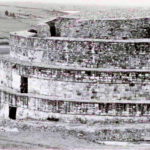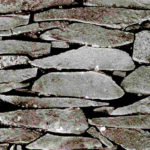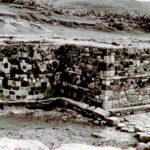Calixtlahuaca
Nahuatl for “House on the Plain”
“Excavations at Calixtlahuaca have brought to light some interesting information that has led archaeologists to recognize five periods of occupation. The earliest, during the Preclassic period, is represented by figurines and a few vertical walls constructed to support some terraces halfway up the hill. The second period of occupation date to the third period of Teotihuacan (AD 300-600), when Calixtlahuaca was the home of people connected with the former site. The earliest building inside the Temple of Quetzalcoatl-Ehecatl dates to this time. The third period shows pronounced influence from Tula. During this time, the second building of the Temple of Quetzalcoatl-Ehecatl was constructed.
In the fourth period (AD 1200-1474), the Matlatzincas, a Nahua group related to, but enemies of, the Aztecs, became the predominant force in the area (Although they had occupied it during the previous period), and the third building of the Temple of Quetzalcoatl-Ehecatl was undertaken. Excavation shows that this building was destroyed by earthquake in 1474. During the fifth period (1474-1510), Calixtlahuaca was conquered by the Aztecs, so it is referred to as the Azteca-Matlatzinca period. During this time, the final enlargement and some reconstruction were carried out on the Temple of Quetzalcoatl-Ehecatl. Also dating to this period are the Altar of the Skullls.
The Calmecac was built during the third and fourth periods and was burned in 1510 on the orders of Moctezuma II, to quell the rebellious Matlatzincas. The inhabitants then left the area but returned after the Spanish conquest, when they founded the new town near their ancient center.” ~ ~ Joyce Kelly

























